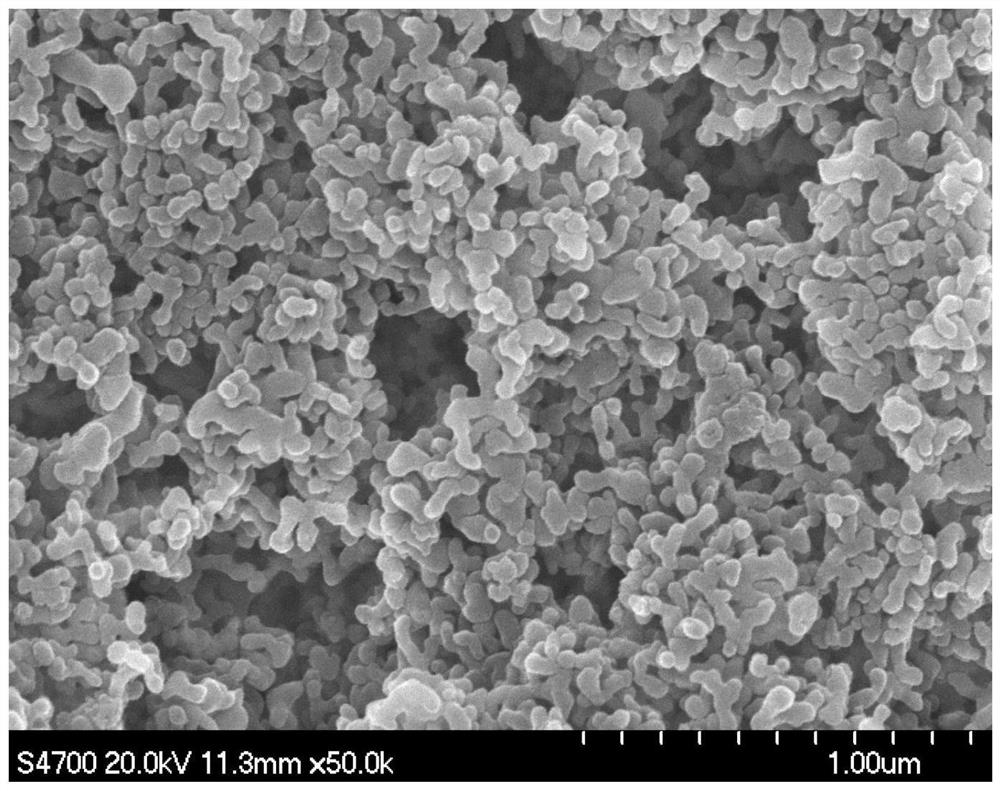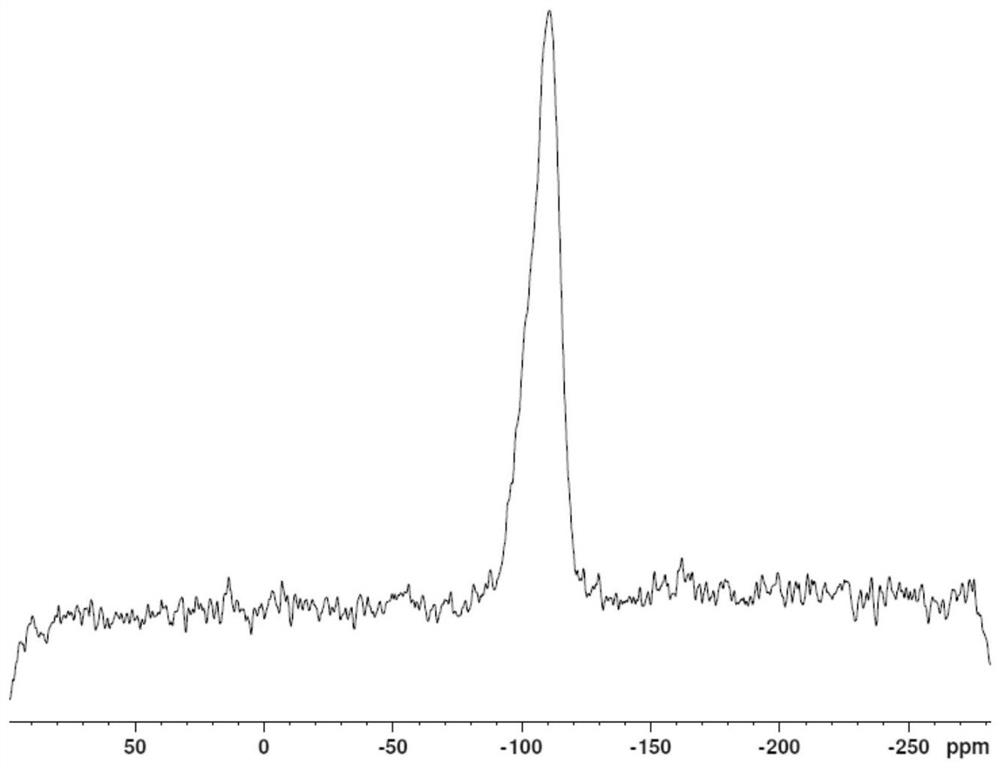A kind of water-saving and energy-saving precipitation production method of silica
A technology of silicon dioxide and production methods, applied in chemical instruments and methods, inorganic chemistry, silicon compounds, etc., can solve the problems of slow reaction rate and low efficiency of silicon hydroxyl groups, silicon hydroxyl groups and metal ions, etc., and achieve Reduce drying energy consumption, reduce hydrogen bond adsorption, and reduce energy consumption
- Summary
- Abstract
- Description
- Claims
- Application Information
AI Technical Summary
Problems solved by technology
Method used
Image
Examples
Embodiment 1
[0042](1) Take 100 mL of water glass, add water to dilute to 500 mL, and stir evenly.
[0043] (2) The water glass diluent prepared in step (1) is heated to 80° C., and the pH value is adjusted to 7.0 with 10 wt % sulfuric acid to form a dilute orthosilicic acid gel.
[0044] (3) Transfer the dilute orthosilicic acid gel into a 1000 mL high-pressure reaction kettle, the stirring speed is 200 rpm, and the reaction is heated to 170° C. for 5 hours.
[0045] (4) Using high pressure nitrogen gas, 80 mL of the solution in which 2 g of magnesium sulfate was dissolved was pressurized from the auxiliary tank to the reaction kettle, and the reaction was continued at 170° C. for 1 hour.
[0046] (5) After the reaction is completed, the temperature is lowered to below 80° C., filtered with a Buchner funnel, washed until detected by barium chloride without sulfate radicals, and dried to obtain the product. Each time the filter cake was beaten and washed with 800 mL of water, and washed t...
Embodiment 2
[0049] (1) Take 100 mL of water glass, add water to dilute to 500 mL, and stir evenly.
[0050] (2) The water glass diluent prepared in step (1) is heated to 65° C., and the pH value is adjusted to 7.0 with 10 wt % sulfuric acid to form a dilute orthosilicic acid gel.
[0051] (3) The dilute orthosilicic acid gel was transferred to a 1000 mL pressure reaction kettle, the stirring speed was 200 rpm, and the reaction was heated to 140° C. for 10 hours.
[0052] (4) 80 mL of the solution in which 2.5 g of calcium nitrate was dissolved was pressurized from the auxiliary tank to the reaction kettle with high-pressure nitrogen, and the reaction was continued at 140° C. for 1 hour.
[0053] (5) After the reaction is completed, the temperature is lowered to below 80° C., filtered with a Buchner funnel, washed until the barium chloride does not contain sulfate radicals, and dried to obtain the product. Each time the filter cake was beaten and washed with 800 mL of water, and washed 4 ...
Embodiment 3
[0056] (1) Take 100 mL of water glass, add water to dilute to 500 mL, and stir evenly.
[0057] (2) The water glass diluent prepared in step (1) is heated to 85° C., and the pH value is adjusted to 7.0 with 10 wt % sulfuric acid to form a dilute orthosilicic acid gel.
[0058] (3) Transfer the dilute orthosilicic acid gel into a 1000 mL pressure reaction kettle, and the stirring speed is 200 rpm, and the reaction is heated to 200° C. for 4 hours.
[0059] (4) The temperature of the reaction kettle was lowered to 160° C., and 80 mL of a solution containing 3 g of magnesium sulfate was dissolved in the reaction kettle from the auxiliary tank, and the reaction was continued for 1 hour.
[0060] (5) After the reaction is completed, the temperature is lowered to below 80° C., filtered with a Buchner funnel, washed until the mother liquor does not contain sulfate radicals as detected by barium chloride, and dried to obtain the product. The amount of water for each washing was 800 m...
PUM
| Property | Measurement | Unit |
|---|---|---|
| modulus | aaaaa | aaaaa |
Abstract
Description
Claims
Application Information
 Login to View More
Login to View More - R&D
- Intellectual Property
- Life Sciences
- Materials
- Tech Scout
- Unparalleled Data Quality
- Higher Quality Content
- 60% Fewer Hallucinations
Browse by: Latest US Patents, China's latest patents, Technical Efficacy Thesaurus, Application Domain, Technology Topic, Popular Technical Reports.
© 2025 PatSnap. All rights reserved.Legal|Privacy policy|Modern Slavery Act Transparency Statement|Sitemap|About US| Contact US: help@patsnap.com


